Cetaceans enjoy the Galapagos Islands’ western waters—in particular the region between Isabela and Fernandina Islands due to the Cromwell Current’s upwelling. Bryde’s and sperm whales, common and bottlenose dolphins, and orcas are seen throughout the year in the Galapagos. Humpbacks, minkes, seis, and blue whales are only present seasonally when they drop down from the north to the warmer waters.
Below you can see a list of the baleen whales, toothed whales and dolphins that can be found throughout the Galapagos.
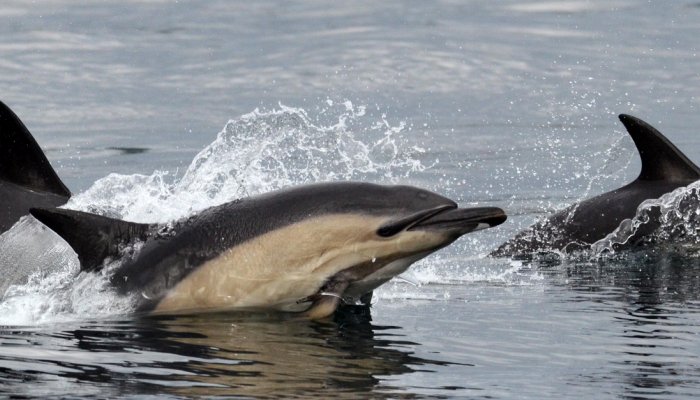
COMMON DOLPHIN
Common Dolphins are smaller than their bottlenosed counterparts, and they also have a more streamlined appearance despite their high weight reaching 290 pounds. Common dolphins travel in large groups, sometimes in pods of over several hundred.
How to spot a common dolphin:
Their flank markings are easy to identify as they bound through the water, as buff and pale gray markings score their flanks in an hourglass shape. If you see a large congregation of dolphins out in the distance, look for their long, upright dorsal fin rising out of the waves and you’ll know you spotted a common dolphin.
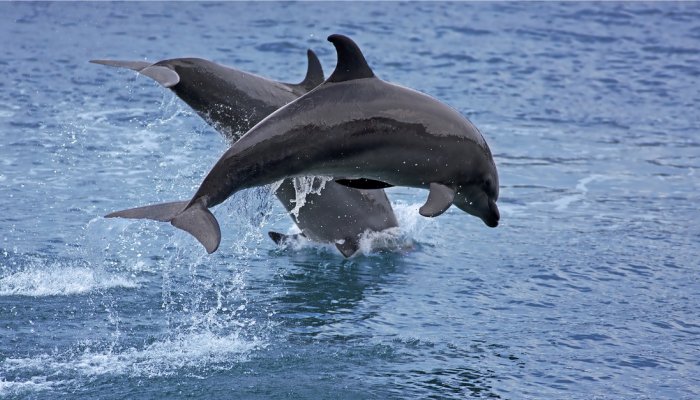
BOTTLENOSE DOLPHIN
Bottlenose dolphins may not be endemic to the Galapagos Islands, but they are a common sight for tourists gathered on the bow of cruise ships and yachts. Bottlenose dolphins enjoy putting on a good show, riding the bow waves, leaping alongside the ships, or making elaborate flips.
How to spot a bottlenose dolphin:
You’ll know a bottlenose dolphin by its short beak, sickle-shaped dorsal fin that curves towards its back, and their palpable playfulness. If you happen to see some bottlenose dolphins at night, they might appear to glow as their movement disturbs countless miniscule, phosphorescent creatures—an interaction that results in bioluminescence.
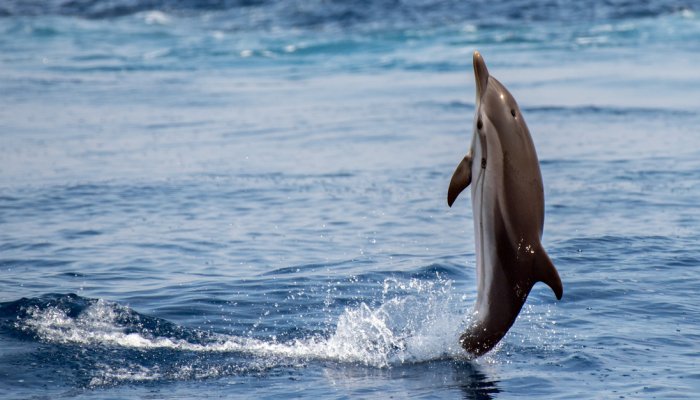
STRIPED DOLPHIN
During your Galapagos vacation, you’re less likely to see Striped Dolphins on your cruise, and you’ll never see them riding the bow waves on your ride. If you’re lucky enough to see a striped dolphin, you’re in for quite a sight.
How to spot a striped dolphin:
Middling in size between the bottlenose and common dolphin, the striped dolphin is marked with a complex pattern of thing and bold strips. One set runs along their eyes to their flippers, while another set slides down the sides of their body to their back flanks.
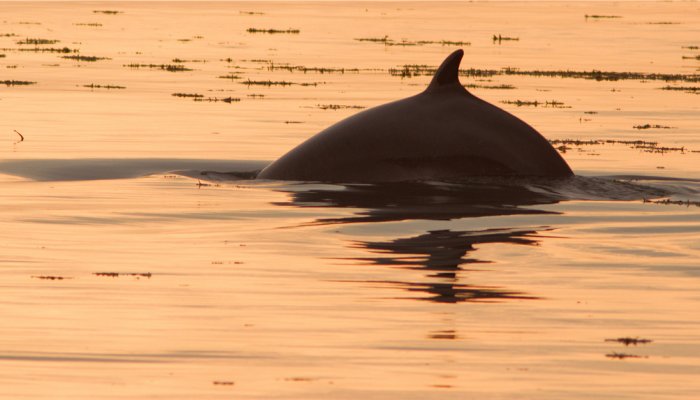
MINKE WHALE
Minke whales are the smallest and most abundant of their Rorqual baleen whale friends, and they also go by “Little Piked Whale” due to their slender, streamlined bodies that come to a thin snout.
Though minke whales are curious and sometimes enjoy approaching ships and playing tag with moving boats, they usually spend most of their time below the surface. With their small spout (only reaching about 6 ft high) and lack of showing off their flukes and fins to landlubbers, they can be difficult to spot.
How to spot a minke whale:
If you’re hoping to find a minke whale during your trip to the Galapagos, look out for a slightly hooked dorsal fin appearing around the same time as the spout.
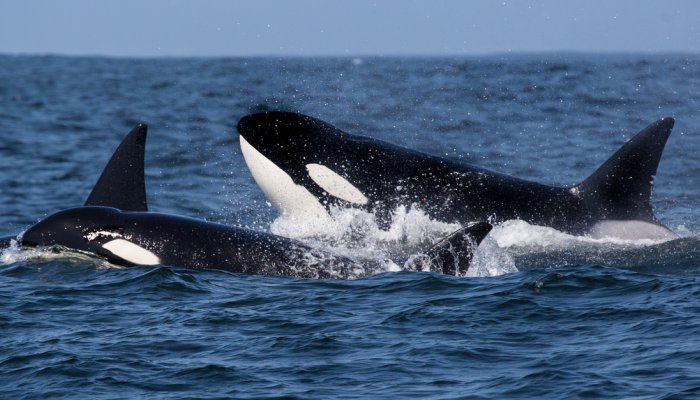
ORCA
Of the toothed whales that visit the Galapagos Islands, orcas are the most frequently seen (though they are permanent residents rather than passing travelers). Orcas may be called “Killer Whales,” but they technically belong to the dolphin family. They are predators with diverse tastes, and so they munch on marine mammals as well as fish.
How to spot an orca:
Their conspicuous black-and-white coloration is easy to spot from the deck or the shore as they porpoise and spy-hop through the tropical waters.
FUN FACT:
Good news for those cute little Galapagos fur seals! Resident orca pods such as the Galápagos orcas tend to prefer fish, whereas transient pods prey more on marine mammals.
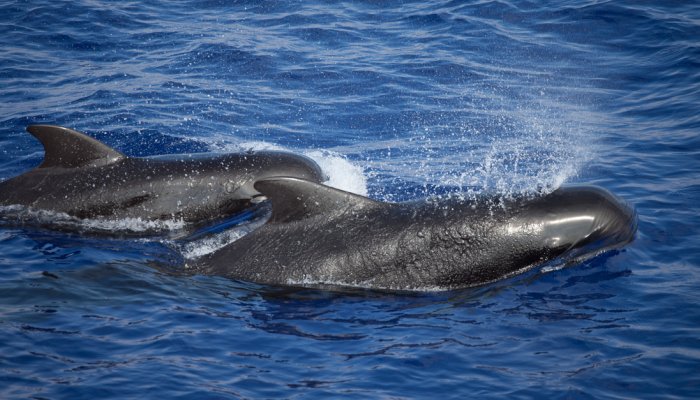
SHORT-FINNED PILOT WHALE
Short-finned pilot whales are much more likely to be seen as they enjoy cruising along the water’s surface in large groups throughout the Galapagos. Short-finned pilot whales are the only pilot whales to inhabit the Galapagos, and they are distinct from the orcas with their largely black bodies and melon-shaped head.
How to spot a short-finned pilot whale:
You might also recognize them by their rounded, back-curving dorsal fin.
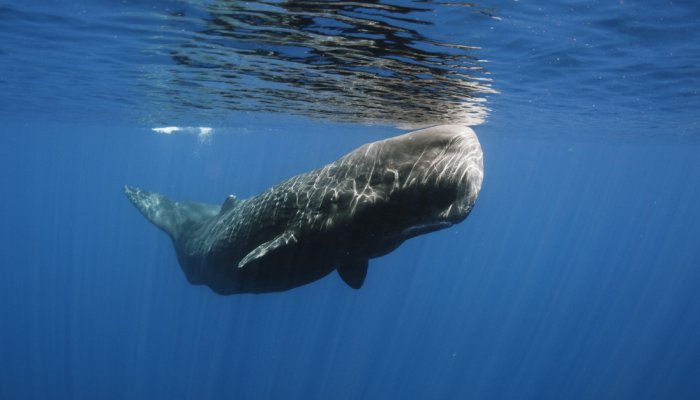
SPERM WHALE
Sperm whales are much less likely to be clearly spotted by visitors due to their deep-diving tendencies. Often, you’ll only recognize these giant creatures by their spouts blooming out of the ocean or the rise and fall of their massive tales as they once again plunge into deeper waters. If you happen to see such a sight, know that you saw the world’s largest carnivore!
How to spot a sperm whale:
If you happen upon one up-close, look for it’s small dorsal fin, squared head, and smaller flippers.
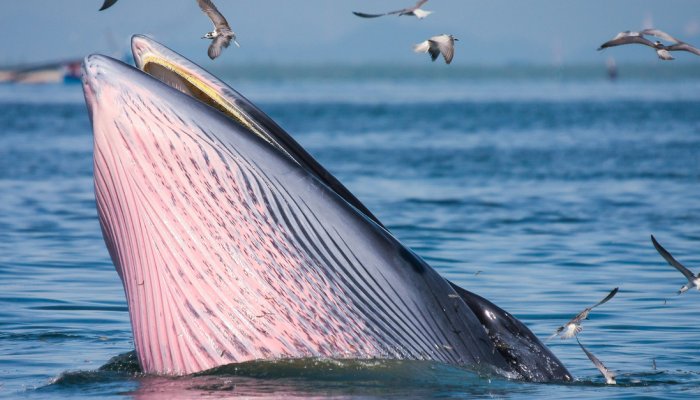
BRYDE'S WHALE
Of all the baleen whales that visit the Galapagos Islands, the one you’re most likely to see cruising around is the Bryde’s whale. Speedy, agile, and smaller than the sei whale, Bryde’s whales can change directions in the water as well as turn up their speed quickly.
How to spot a Bryde’s whale:
You’re most likely to recognize the Bryde’s whale by the three unique ridges that crowns its head. Unlike some other whales, the Bryde’s whale often pops its head to the surface after coming up from a dive. In contrast, it rarely shows its fluke—or tail—so looking out for its head is your best bet.
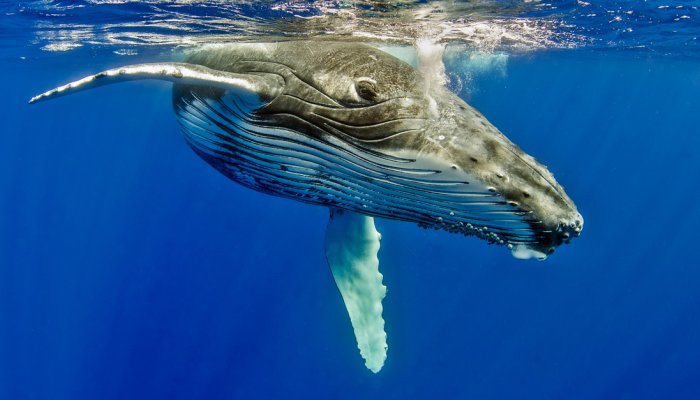
HUMPBACK WHALE
Though the Bryde’s whale are the most common whale in the Galapagos, the Humpback whale is the most easily identified whale. They’re quite active on the surface, breaching frequently and occasionally jumping right out of the water. They also have a bit of The Little Mermaid syndrome and always want to be part of your world. In order to see the world out of the sea, they like to “spy-hop” and lift their heads out of the water, twisting around to get a panoramic view of the surface’s sunnier side.
How to spot a humpback whale:
You can recognize humpback whales by their, not surprisingly, humped back, knobby head, and incredibly long flippers. They also show their fluke on the surface when diving, announcing their presence.
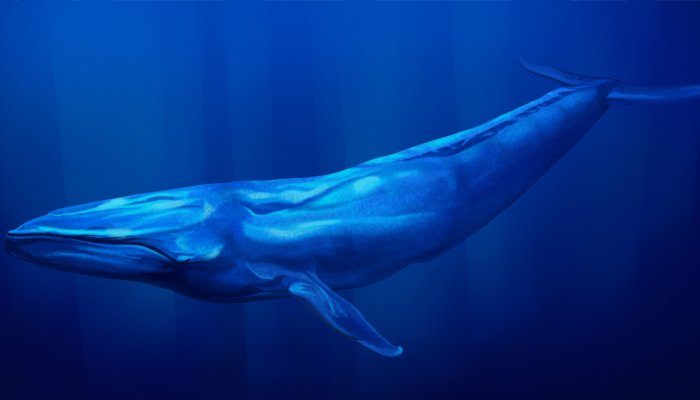
BLUE WHALE
The largest animal on the planet, the blue whale, regularly hangs out in the Galapagos waters. True to form, everything about the blue whale is bigger and better. Matching their immense size of up to 100 feet in length, they weigh over 200 tons. To put that in perspective, their heart can equal a car in weight, and their tongue is so heavy they are basically holding an elephant in its mouth.
Blue whales are no lumbering giants, and they can book it through the ocean despite their size and weight. Their ability to cruise at over 20 mph if necessary probably saved them from many a steam-powered whaling ships in the 19th century.
How to spot a blue whale:
Occasionally you can see their massive bodies surfacing around the archipelago and blowing a spout arching over 30 feet into the air.
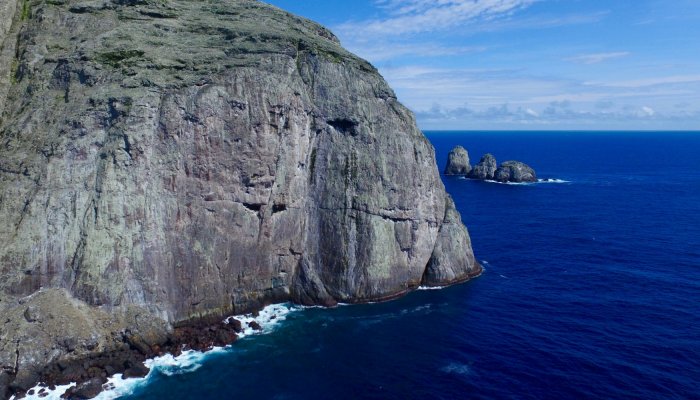
SEI WHALE
Sei Whales (pronounced either “sigh” or “say”) migrate to the Galapagos’ warmer waters during the winter. Sleek and large—reaching about 100,000 lbs and 40-60 feet—sei whales enjoy the deeper waters off the coastline. Colored dark-grey and bluish gray, sei whales are similar in appearance to Bryde’s whales, but can be distinguished by the single ridge lining their snout as opposed to a Bryde’s three ridges.
How to spot a sei whale: You can spot them by looking for a slow blow with a spout that forms a 10 ft inverted cone. As they don’t roll or show their flukes when reaching the surface, the spout is the easiest way to keep an eye out for one when you’re on a boat.

